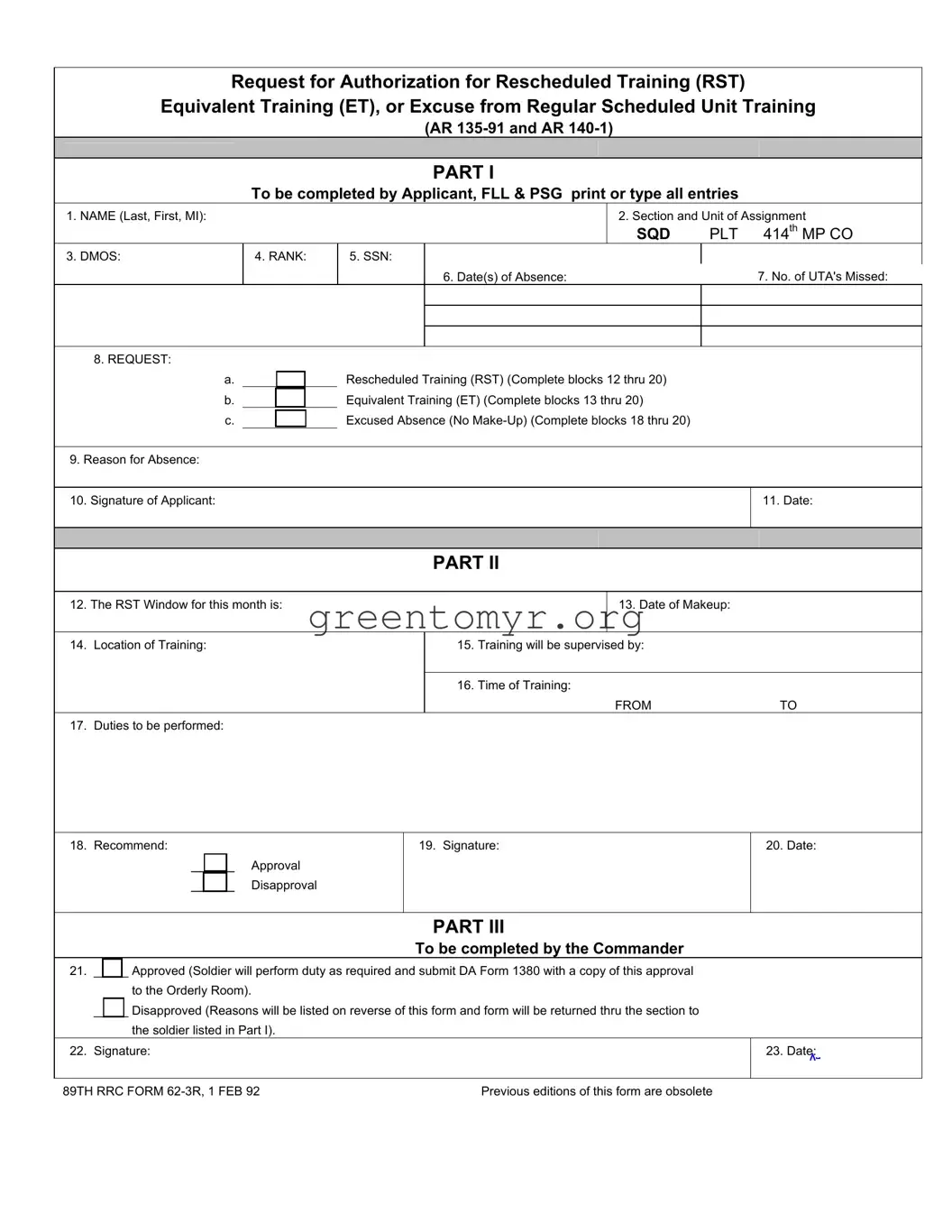The RST Army form, formally known as the Request for Authorization for Rescheduled Training, is used by service members to request alternate training dates or an excuse for missing regular scheduled unit training. It aligns with Army regulations AR 135-91 and AR 140-1.
The form is completed by the applicant, who may be a service member, along with the First Line Leader (FLL) and the Platoon Sergeant (PSG). All entries should be printed or typed for clarity.
The form consists of three parts:
-
Part I: Information from the applicant and FLL & PSG.
-
Part II: Details regarding the rescheduled training or equivalent training, including training location and supervision.
-
Part III: Approval or disapproval by the commander, along with necessary signatures.
In Part I, you must supply your name, unit assignment, duty military occupational specialty (DMOS), rank, Social Security Number (SSN), dates of absence, number of Unit Training Assemblies (UTA) missed, and the reason for your absence. Additionally, you will need to sign and date the form.
You can request:
-
Rescheduled Training (RST)
-
Equivalent Training (ET)
-
Excused Absence (No Make-Up)
After the completed form is submitted, the commander reviews it. They can either approve or disapprove the request. If approved, the service member must perform the required duty and submit the DA Form 1380 along with the approval to the Orderly Room. If disapproved, the reasons will be documented and communicated back to the service member.
What should I do if my request is disapproved?
If your request is disapproved, you will receive a note on the reverse of the form that outlines the reasons. This form will be returned to you through the section you belong to, allowing you to understand the decision better.
While specific deadlines may vary by unit or circumstance, it is generally advisable to submit the RST Army form as soon as you realize you will be absent from scheduled training to allow for prompt processing.

